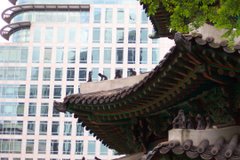
It is one of the Japanese war crime took place in the Philippines in 1942. The 60-mile (97 km) march occurred after the three-month Battle of Bataan in the Philippines (1941–42), during World War II. The march involves the forcible transfer of 90,000 to 100,000 American and Filipino prisoners captured by the Japanese in the Philippines from the Bataan peninsula to prison camps. During the march, Japanese soldiers committed wide-ranging physical abuse, murder, and very high fatalities were inflicted upon the prisoners and civilians along the route. Beheadings, cut throats and being casually shot were the more common and merciful actions — compared to bayonet stabbings, rapes, guttings (disembowelments), numerous rifle butt beatings and a deliberate refusal to allow the prisoners food or water while keeping them continually marching for nearly a week (for the slowest survivors) in tropical heat. It was as horrible as other Japanese war crime.
I found a website which contains testimony from the Bataan survivors. What I found very interesting in the website is the American victims’ attitude in comparison with Asian countries’ public’s attitude. Most of Asian countries’ museum and websites contains certain degree of nationalism and collective antipathy against Japan (For example, the Chinese website on the Nanking massacre). However, this site is just trying to record and remember what happened in the Bataan and trying not to be emotional. Is this a difference of culture? Or American public perceived Japan was underwent enough punishment while Asian countries’ public still do not think so?
Some testimonies from the website:
"On the first day, I saw two things I will never forget. A Filipino man had been beheaded. His body lay on the ground with blood everywhere. His head was a short distance away. Also, there was a dead Filipino woman with her legs spread apart and her dress pulled up over her. She obviously had been raped and there was a bamboo stake in her private area. These are instances I would like to forget."
"They were expected to keep up like everyone else, regardless of their condition. But, some wounded prisoners just couldn't go on. They were either bayoneted, beat with clubs, rifle butts, or shot. Some soldiers had diarrhea so bad that they couldn't keep up and the Japanese shot them."

2 comments:
Perhaps the reason Americans are not getting that emotional is that they do not share the same culture as East Asians. I believe strong nationalism and resentment engendered by Korea toward Japan is rooted in cultural aspects. Since China and Korea believe their commonly shared culture was transmitted to Japan via Korea, colonization by Japan caused both Chinese and Koreans to feel humiliation and injustice. When America was fighting against Japan, China and Korea were invaded by Japan. This alone makes a huge difference as to how the two countries, United States and Korea, remember the past and how their emotions are involved.
Interesting testimony from the book "Blood Brothers: A Medic's Sketch Book," by Eugene C. Jacobs. He was a colonel during the Second World War and was actually in the Death March. While he was marching, he found that:
"The Korean guards were the most abusive. The Japs didn't trust them in battle, so used them as service troops; the Koreans were anxious to
get blood on their bayonets; and then they thought they were veterans."
His whole book is online at:
http://infomotions.com/etexts/gutenberg/dirs/etext05/blbro10.htm
Post a Comment